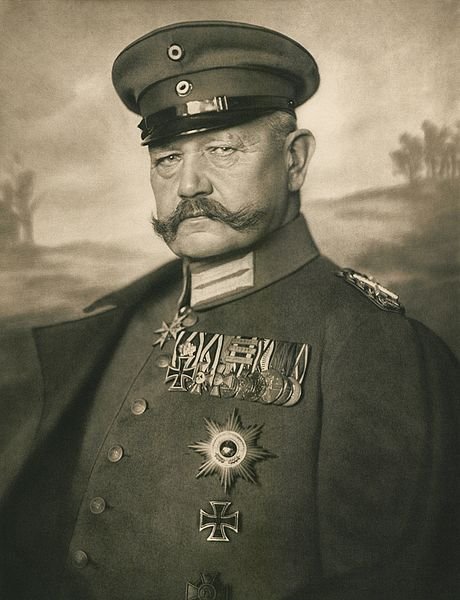History - World War 1: The Attack of the Dead Men
Ruins of 2nd fort in Osowiec-Twierdza, Poland (image by Wojsyl - Wikipedia)
The first time I heard about this, my mind instantly went to zombies even though it referred to an incident that occurred during the First World War; needless to say, I was confused by the reference.
This attack took place on the 6th of August 1915 at Osowiec Fortress in what is now northeast Poland.
Built by the Russian Empire in the 19th century, Osowiec Fortress had a very effective defence system.
Any attempt to storm the fortress was hampered by, first, having to cross 2 sets of trenches and barbed wire.
Those who managed to get through were then faced with the fortress’ outer defences – tall walls and battlements from which they could be easily picked off by defenders who were in relative safety.
With such a defence system, not many soldiers were needed to defend the fort.
On the 1st of August 1914, Germany declared war on Russia.
In September 1914, the Germans attacked the Russian field defences around Osoweic fortress. Deploying 40 infantry battalions of the German 8th Army, the attackers far outnumbered the defenders.
By the 21st of September, the Germans had advanced far enough that the fortress was now within range of German artillery.
Fortunately for the Russians, their artillery managed to repel a German frontal assault, and in the days following, Russian counterattacks successfully drove back the German artillery and the fortress was, once again, outside the range of enemy artillery.
Osowiec Fortress, Fortress Church Jan 1915 (Wikipedia)
On the 14th of February 1915, Osoweic Fortress was attacked again; this time the German army bombarded it with heavy artillery.
In the last week of February, the fortress was subjected to a second bombardment, which lasted the entire week.
Despite this, the Russians still managed to repel the enemy’s infantry attacks.
Undeterred, at the beginning of July, the Germans, led by Field Marshal Paul von Hindenburg, launched another attack, this time a full-frontal offensive on the fortress.
Field Marshal Paul von Hindenburg, 1914 (Wikipedia)
In addition to 14 infantry battalions and up to 30 siege guns, the Germans also had a battalion of sappers and 30 batteries of artillery.
The Russian defences were manned by 500 soldiers of the 226th Infantry Regiment Zemlyansky and 400 militia.
What the Russian soldiers didn’t know was Hindenburg had brought a deadly weapon with him – chlorine gas.
Reported to have a distinctive smell, like pepper and pineapple, and a metallic taste, it stung the back of the throat and chest.
Once inhaled, it reacts with the moist mucous membrane of the lungs to form hydrochloric acid, a corrosive acid that causes chemical burns and destroys living tissue.
The Germans bided their time before releasing the gas, waiting for favourable wind conditions.
At 04:00 on the 6th of August, the Germans released the chlorine from 30 gas balloon batteries.
This was swiftly followed by German artillery fire.
A green and yellow fog spread over the area, turning the grass black.
The Russian soldiers had gas masks, but these proved inadequate; many men wrapped wet rags around their faces to try and filter out some of the gas.
The German soldiers, believing those inside the fortress to have already succumbed to an agonising death, donned their gas masks and advanced.
Over 7000 German soldiers approached the fortress and made it over the wall, expecting little to no resistance.
They were wrong.
Second Lt. Vladimir Kotlinsky (Wikipedia)
About 60 Russians, led by Second Lieutenant Vladimir Kotlinsky, charged.
Bloody rags wrapped around their faces, the Russian soldiers were coughing up blood and bits of their lungs as the hydrochloric acid had already begun to dissolve their flesh on the inside.
Some Germans fired at the ‘dead men’, but it did nothing to quell the ferocity of the Russians’ attack.
Dropping their weapons, the Germans fled, some getting caught up in their own barbed wire.
The remaining Russian guns opened fire on the retreating Germans.
The attack by Kotlinsky and his men bought time for Russian reinforcements to retake the fortress before the Germans had a chance to regroup.
However, for those who had inhaled the gas, there was no relief.
Many died, including Second Lieutenant Vladimir Kotlinksy.
Osowiec Fortress managed to hold for long enough, protecting Russian forces retreating from the area, but it was only a matter of time before it fell.
However, it wasn’t the Germans who won control of it.
On the 18th of August, the remaining Russian soldiers demolished much of the fortress before withdrawing.
Once again, I am blown away by what ordinary people are capable of in truly awful situations, that they are able to dig so deep and find the iron will to keep going, even with death so close.
So, how did I come across this?
Once again, it was thanks to the Swedish heavy metal band, Sabaton.
I’ve chosen the video of the song put together by Knight SGC who always does a superb job matching the songs to either films or documentaries of the subject.



